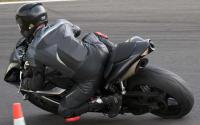PROBE RADIUS COMPENSATION
- Ahmed.emara
- Offline
- Junior Member
-

Less
More
- Posts: 20
- Thank you received: 0
19 Jan 2025 11:48 #319362
by Ahmed.emara
PROBE RADIUS COMPENSATION was created by Ahmed.emara
Hi everyone,I’m currently working on calibrating my 5-axis CNC milling machine, and I’ve encountered a few challenges. I need to accurately probe multiple points on a workpiece (such as a rectangular block or sphere) to align the machine and compensate for any errors. The goal is to determine the exact machine positions relative to the theoretical workpiece coordinates.For this, I’ve been debating whether to buy a commercial probing tool (e.g., Renishaw or Blum) or design and build my own probing tool. Here’s what I’ve been considering:
1- if i switched to spherical shape instead of rectangular one will it simplify the calibration process, especially when compensating for B-axis tilt?
2- is there is a predefined probe radius compensation in linuxcnc which i can use and it take considaration a titled workpiece
3- For a DIY probe using the method described above (24V signal on contact), will this provide sufficient accuracy and reliability for calibration purposes or should I invest in a commercial probe for the long term ?
- When the B-axis is tilted, compensating for the probe radius can get tricky. For example, if I’m probing a side of a rectangular block, I have to account for offsets in both X and Z (or other axes, depending on the tilt). This makes me wonder if switching to a spherical calibration disk might simplify things, as the sphere has constant radius compensation regardless of tilt.
- I’ve designed a potential DIY probe where the tool tip is connected to 24V, and the workpiece (or calibration disk) is connected to the CNC controller’s input port. When contact is made, the circuit closes, and the signal is detected. This seems similar to how commercial probes work but is much simpler.
1- if i switched to spherical shape instead of rectangular one will it simplify the calibration process, especially when compensating for B-axis tilt?
2- is there is a predefined probe radius compensation in linuxcnc which i can use and it take considaration a titled workpiece
3- For a DIY probe using the method described above (24V signal on contact), will this provide sufficient accuracy and reliability for calibration purposes or should I invest in a commercial probe for the long term ?
Please Log in or Create an account to join the conversation.
- andypugh
-

- Offline
- Moderator
-

Less
More
- Posts: 19752
- Thank you received: 4584
31 Jan 2025 10:41 #320219
by andypugh
Replied by andypugh on topic PROBE RADIUS COMPENSATION
I seem to remember typing a lengthy answer to this question, but whether it was this question or a very similar one somewhere else I am not sure.
It's very hard to do probe radius compensation in the controller as there is no way to know where on the surface of the ball the workpiece has touched it. You can't assume that it is perpendicular to the direction of motion, as it could be a glancing contact. You can't even know which side of the ball is touching the work (consider a probe move along the length of a narrow tapering slot.
If you have many probe points then you can construct a surface in CAD and then offset the surface by the probe radius. Because you have many more points you can make assumptions about the continuity of the surface. (possibly wrong assumptions...). The controller itself has no "memory" of previous probe positons, nor does it have any "concept" of the part geometry.
A home-made probe can be quite repeatable, though probably not as good as a commercial one, especially in terms of lobularity error.
If you do want to make your own probe, then you might want to look at my design, which I think is easier to make than the 6-ball designs, and is easier to make very small as it uses no fasteners to hold it together.
It's very hard to do probe radius compensation in the controller as there is no way to know where on the surface of the ball the workpiece has touched it. You can't assume that it is perpendicular to the direction of motion, as it could be a glancing contact. You can't even know which side of the ball is touching the work (consider a probe move along the length of a narrow tapering slot.
If you have many probe points then you can construct a surface in CAD and then offset the surface by the probe radius. Because you have many more points you can make assumptions about the continuity of the surface. (possibly wrong assumptions...). The controller itself has no "memory" of previous probe positons, nor does it have any "concept" of the part geometry.
A home-made probe can be quite repeatable, though probably not as good as a commercial one, especially in terms of lobularity error.
If you do want to make your own probe, then you might want to look at my design, which I think is easier to make than the 6-ball designs, and is easier to make very small as it uses no fasteners to hold it together.
Please Log in or Create an account to join the conversation.
- spumco
- Offline
- Platinum Member
-

Less
More
- Posts: 1965
- Thank you received: 799
31 Jan 2025 21:30 #320261
by spumco
Replied by spumco on topic PROBE RADIUS COMPENSATION
- my Questions are :
- 1- if i switched to spherical shape instead of rectangular one will it simplify the calibration process, especially when compensating for B-axis tilt?
2- is there is a predefined probe radius compensation in linuxcnc which i can use and it take considaration a titled workpiece
3- For a DIY probe using the method described above (24V signal on contact), will this provide sufficient accuracy and reliability for calibration purposes or should I invest in a commercial probe for the long term ?
- 1 - All commercial calibration artifacts I've seen are spheres
- They are attached to the work surface, and the probing routines (DIY or purchased) probe the sphere at various locations - including A- and B-axis tilts.
- Center of rotation for each rotary axis is calculated after the calibration ball is probed in multiple locations
- Some machines then write the absolute value of the rotary axes CoR to non-volatile parameters for use by TCP. All that's needed from that point is to re-probe a few locations after operation to check & adjust for thermal changes.
- 2 - A number of the GUI's available with LCNC have probing features/functions. I believe all of them have some sort of probe tip diameter compensation adjustment.
- I don't think any of the LCNC GUI's offer rotary axis calibration probing macros, however.
- 3 - This is not the way commercial probes work - they don't pass current through the probe and part back to the controller.
- Probes have a number of internal mechanism designs, but they are essentially a switch. When the probe stylus is touched/displaced from it's resting point, the switch triggers and the controller sees that state change as a 'touch.'
- Higher-cost probes use internal strain gauges to detect stylus deflection. Lower-cost probes use the 6-ball mechanism Andy mentioned in his response. An internet search for 'CNC touch probe mechanism' or similar should help you visualize what's going on inside.
- If you don't want to DIY a probe, and you don't want to pay for a Blum or Renishaw, there are lower-cost probes (wired & wireless) available which provide quite decent results.
- The nice thing about purchasing a higher-end probe is that they generally come with a suite of probing macros which can be installed on the controller. I've never used a commercial probe with LCNC, so I don't know if commercial probing macros are compatible.
Please Log in or Create an account to join the conversation.
- scotth
- Away
- Elite Member
-

Less
More
- Posts: 241
- Thank you received: 61
01 Feb 2025 04:54 #320281
by scotth
Replied by scotth on topic PROBE RADIUS COMPENSATION
For axis cal look at this. www.renishaw.com/en/axiset-check-up--11353
Renishaw has some nice software for calibration on multi axis machines. I have not seen anything for Linuxcnc only Fanuc and Siemens. They do provide source files.
Renishaw has some nice software for calibration on multi axis machines. I have not seen anything for Linuxcnc only Fanuc and Siemens. They do provide source files.
The following user(s) said Thank You: spumco
Please Log in or Create an account to join the conversation.
Time to create page: 0.061 seconds
